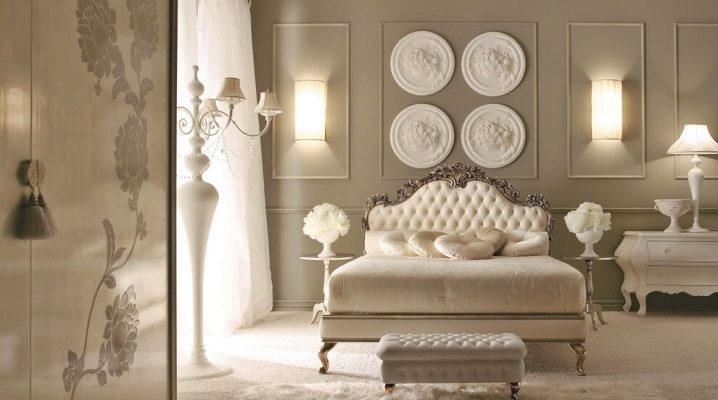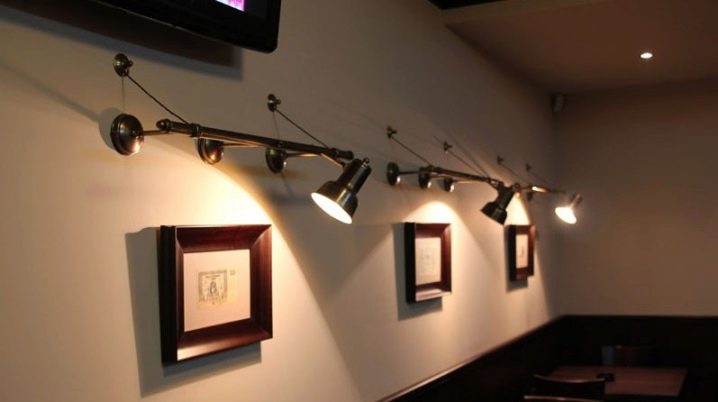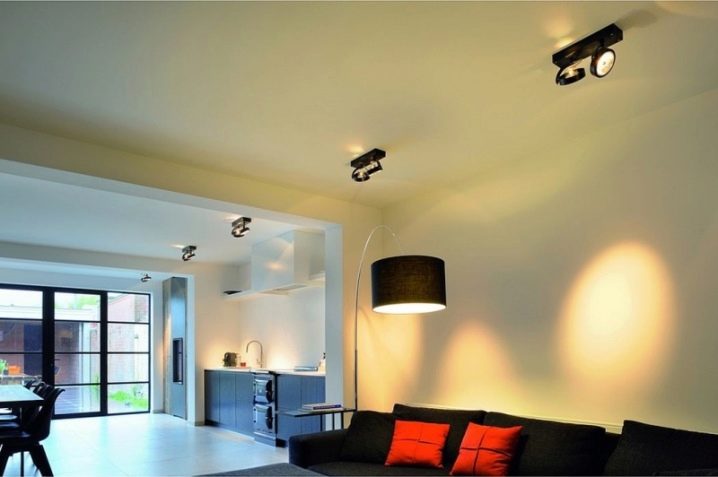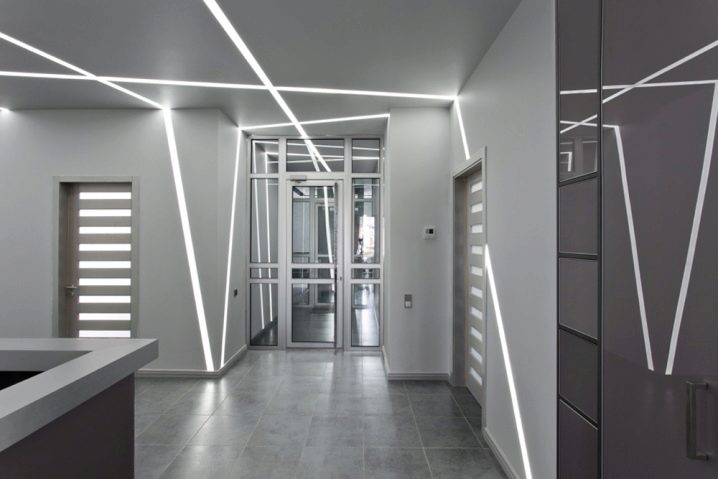LED Wall Lights

Recently, interior lighting has taken on a completely different framework. Thanks to a professional design approach, the lighting of the room has been transformed into art, through which a cozy atmosphere is created. In addition to the main luminous flux, additional light is a mandatory design attribute. Among the huge selection of products on offer, wall-mounted LED lamps are especially popular with buyers. They stand out from other light sources and have a lot of advantages.


Features and benefits of diode lighting
LED wall lights are the best way to decorate a room. With their help, you can illuminate a specific area or hide room imperfections. They are distinguished by bright light, therefore they do an excellent job of illuminating the desired area of the space, give soft, dim light, if the situation requires it. Products are made from different materials, among which the most popular raw materials are metal, plastic, wood and glass.


They have a lot of advantages, they:
- most models have the function of adjusting the light intensity, allowing you to save energy with a large number of lamps;
- differ in distribution, illuminating different area (indicated in the passport);
- are key design elements the interior of the room, bringing into it a special disposing atmosphere and a sense of home comfort;
- suitable for lighting different rooms dwellings (bedrooms, nursery, living room, study, hallway, bathroom, garage);
- have a wide range of models, allowing any design interior decoration of the room, having a classic look or thematic focus;
- fit well into any interior style rooms (minimalism, provence, modern, high-tech, country, vintage, Arabic, oriental, avant-garde, glamor, etc.), being an appropriate finishing touch of design;



- differ in a variety of sizes, thanks to which they are suitable for rooms of any, even small-sized type;
- have a different design, which allows the use of lamps in premises of different types (dwellings, industrial premises, public places, outdoors);
- have a different type of base, thanks to which you can easily replace the lamp, choosing the most convenient option to create a luminous flux of the required volume;
- can be used in any type of wall with different finishes (they do not heat up, therefore they will not melt the installation area);
- implies different locations depending on the model (can be single accents of a room or point, making up a composition on one or all walls);


- have a unique bodyproviding the device with reliability and efficiency;
- differ in different cost, based on the cost of the components, size, design and production method, which allows you to choose the model you like, taking into account the taste and the budget available for the purchase.
Wall mounted LED luminaires are recognized as the best interior decoration. Having high indicators of durability, quality of the distributed stream (no flicker and resistance to sudden voltage surges) and a different connection scheme, they combine the best performance of other analogs.


Minuses
Unfortunately, LED lamps give a luminous flux exclusively in one direction, they cannot completely and evenly fill the whole room with them, like the main (ceiling) chandeliers. For the correct distribution of light, an accurate calculation of the power and the number of elements is needed.
Despite the fact that they work for a long time (designed for 100,000 hours), after 3 - 4 years of intensive load, the brightness of the bulbs gradually decreases.
Models with a series connection scheme will stop working if the circuit is open due to the burnout of one element. They are worse than analogs with parallel connection, the LEDs of which work until their resources are completely depleted.
An unpleasant nuance is the cost of LED lamps: their price is 5-6 times higher than that of luminescent (energy-saving) analogs, due to the presence of current-limiting resistors.


LED characteristics
Depending on the specific light source, the characteristics of wall-mounted LED luminaires are:
- power consumption - 2 - 30 W;
- temperature shade of luminous flux - 2700 - 6700 K;
- type of execution - E14, E27, G5, G13, GU4, GU5.3;
- voltage - 12 (permanent) - 220 (changeable).

The radiation power of LED wall lamps is much higher than incandescent lamps. Moreover, the percentage of consumption is very low, and the return is high. LED bulbs do not heat up like incandescent bulbs. They shine brighter: a 2 W lamp corresponds to a 20 W incandescent lamp, 12 - 15 W is equal to 100 W, 25 - 30 W - 200 W of the usual Ilyich bulb.
This is the so-called LED lamp, which is the most popular light source today. It has a different type of flask (pear-shaped, conical, spherical, krypton, spherical, reflex, tubular). An LED lamp is safer than a fluorescent lamp: it does not emit mercury vapor during operation, it is resistant to repeated switching on and off, in contrast to the energy-saving analogue, which costs many times more incandescent lamps.


Colour
The luminous flux temperature is one of the advantages of LED lamps. These wall luminaires have a wide range of light emission, indicated on the Kelvin scale, thanks to which you can choose the level of naturalness of the desired room lighting from yellow to blue:
- yellow - 1800 - 2600 K;
- moderately warm - 2700 - 3700 K;
- neutral - 3800 - 4700 K;
- cold white - 4800 - 5600 K;
- cold blue - 5700 - 6600 K.

Such wall lamps differ from ordinary lamps: they relieve tired eyes, gently distribute the luminous flux, have a pleasant design and do not take up much space, being perfectly combined with a central chandelier and spotlights.
Views
LED wall lights are varied. By the type of power source, they differ in a switch and are:
- stationary;
- powered by batteries.
The appearance of the models is also different. They can be linear, overhead, swivel, point, be a panel, "brick", a long flexible tape with LEDs, which can be easily positioned anywhere, highlighting any desired area.



In terms of functionality, they are:
- with motion sensor;
- with control panel;
- with sound sensors (bedside lamps for babies);
- with built-in melodies, projection, recording and playback function (night lights);
- with a swivel mechanism.



By type of construction, directional light models are divided into:
- indoor lighting - a sconce on a leg-bracket, providing fixation of the lampshade or plafond;
- near-surface - backlight shades, pressed against the wall, saving space, but not having the function of adjusting the brightness of the luminous flux;
- built-in suspended - models with wall mounting, equipped with a stationary or swivel head;
- spots - models of directional action made of metal or plastic, built-in or surface-mounted type, with a swivel mechanism that allows directing the light flux where the user needs it.





By the type of lighting, wall LED lamps are:
- direct lighting (built-in type);
- reflected (suspended);
- direct and reflected at the same time (suspended);
- asymmetric (wall lighting models).



The form
The range of wall lamps is multifaceted. The form can be standard, classic or non-standard.
The models are divided into several directions:
- office;
- workers;
- decorative;
- children.
Each group has its own characteristics. Home options are more appealing. Desktop lighting models adhere to functionality, so they look simple, having a round, oval, sometimes square shape of the lamp with or without a leg.



The varieties for children are unique and allow you to bring a special atmosphere into the room, breathing the world of childhood. The most interesting models are a variety of thematic designs in the form of sconces. These LED accessories have an unlimited design format. Of particular note are the variants in:
- nautical style;
- flower theme;
- the form of toys and cartoon animals;
- projectors with colorful drawings and space pictures;
- the theme of sports;
- the form of celestial bodies.
The uniqueness of the design allows you to create a relaxing atmosphere in the child's room, which is especially important before bedtime. In addition, some functional LED lamps, located on the wall, are able to "lull" the baby, offering his attention multicolored pictures with a kind theme smoothly sliding along the walls.



It helps relieve stress for children who have a phobia of the dark or stressful conditions caused by the events of the day.
Color solutions
Color solutions of LED wall lamps are varied and follow the general idea of interior design. Models for children are distinguished by cheerful colors and flight of imagination. They are classified into three groups:
- for girls, with characteristic pink, white, lilac, burgundy, mint shades of decorative elements;
- for boyshaving blue, blue, red, beige paints in the decoration of the plafond or lampshade;
- universaldesigned for both sexes (green, brown, steel, white, turquoise).



The options for adults are simpler, they are made in white, black, gray tones with a metallic sheen. However, designers recommend avoiding gloomy tones when buying, especially a plafond: the luminous flux is less diffused, and the appearance of such a lamp against the general background looks depressing.

Application options
LED wall lamps are universal and differ in that they can be positioned anywhere, if required by the interior design.
In addition to the usual installation on the wall near the bed, they are appropriate:
- to highlight a mirror or dressing table;
- garage lighting (garage);
- as a backlight for a desk;
- to create soft light near the crib (bedside lamps or sconces with adjustable brightness);
- to illuminate the hallway and corridor;
- as a light source for a bathroom or toilet;
- for compositional accentuation of the play or sleeping area of the child's room.





How to choose LED models for the wall of the room?
When choosing a model of a LED wall lamp, you need to take into account a number of factors, among which are important:
- type of room or accent of a particular area (it is important to take into account the dimensions of the area, the height of the ceiling, otherwise the lamp will be inappropriate against the general background);
- model size (it should not create a visual advantage in relation to the chandelier);
- availability of brightness adjustment functions luminous flux and swivel mechanism (adds convenience and comfort in operation, allowing you to change the degree of brightness and angle of light scattering at will);



- compatibility in terms of luminous flux temperature and style with the main lighting lamp;
- simplicity and ease of installation of the structure with the possibility of easy replacement of burnt-out lamps;
- flawless operation of the on and off mechanism;
- luminaire durability, high-quality assembly and reliable components resistant to mechanical damage.
The choice must be precise: there is always an opportunity to see the model for quality and defects, to evaluate the work of the luminaire. Upon purchase, the product is supplied with documentation that informs the buyer about the characteristics of the model, the purpose (for home or outdoor use), and the manufacturer's data.



Beautiful interiors of apartments
Wall lights look good just about anywhere. However, if they are the singular accents of the room, they need support through other furnishings.
A swing-type pendant lamp in black in the style of minimalism will perfectly fit into the interior of a bright room, illuminating the reading area on the sofa, having support in the form of a pattern of a picture or a dark blanket;

Near-surface backlighting shades look harmoniously against the background of the interior in beige and sand tones, having a golden edging of the structure, making up a composition of three different sizes of the same model;

Original LED spotlights will create the right atmosphere, emphasizing the accents of the wall with fanciful figurines, for complete harmony, having a similar light support on the ceiling;

Linear luminaires are able to highlight individual design touches, visually increasing the height of the walls and creating a soft evening glow;

A square-shaped model with an abundance of lamps will perfectly cope with the selection of the dining area, creating a pleasant atmosphere if its luminous flux is as close as possible in temperature to the main ceiling.


You will learn more about how to choose LED wall lights in the following video.













The comment was sent successfully.